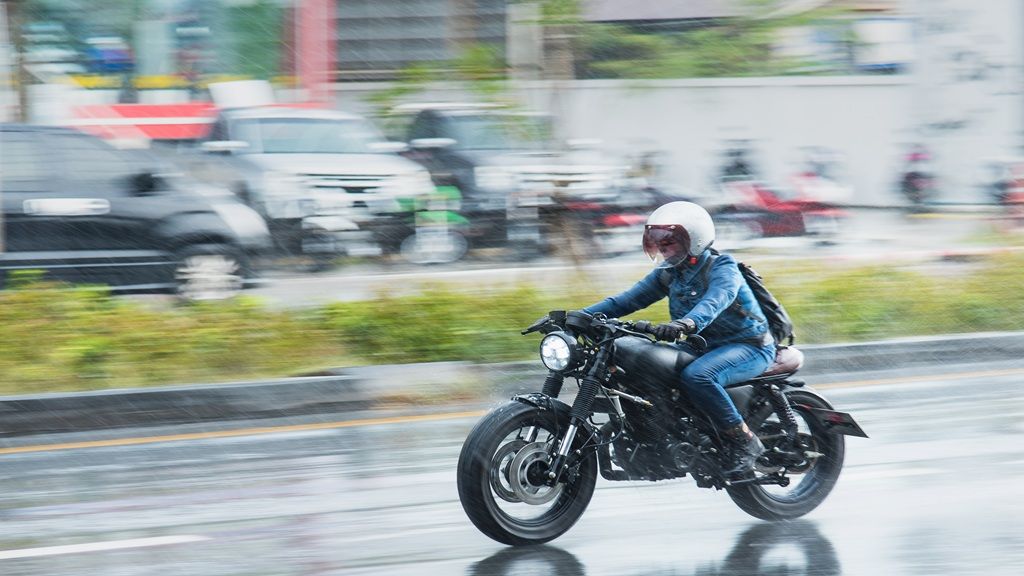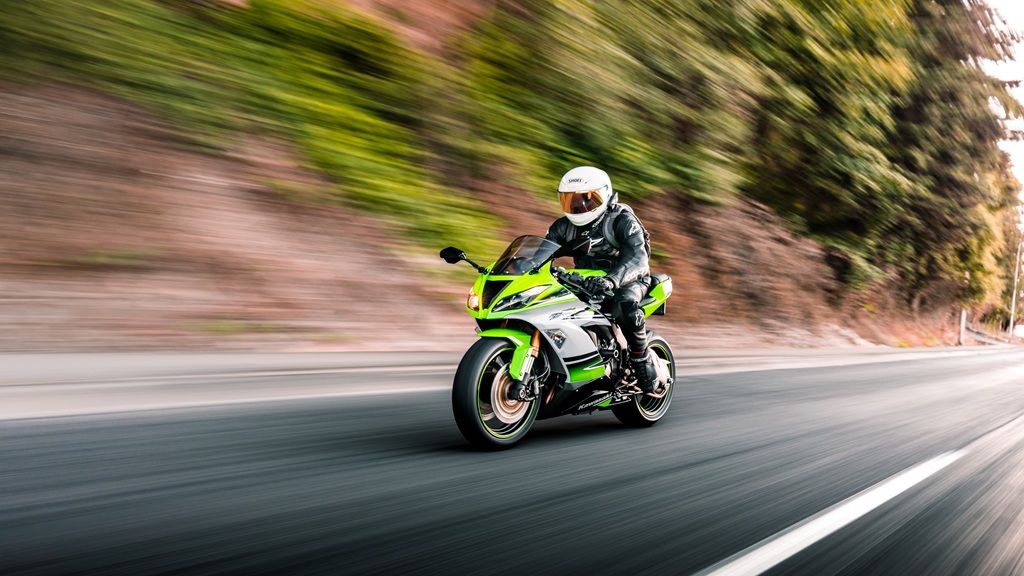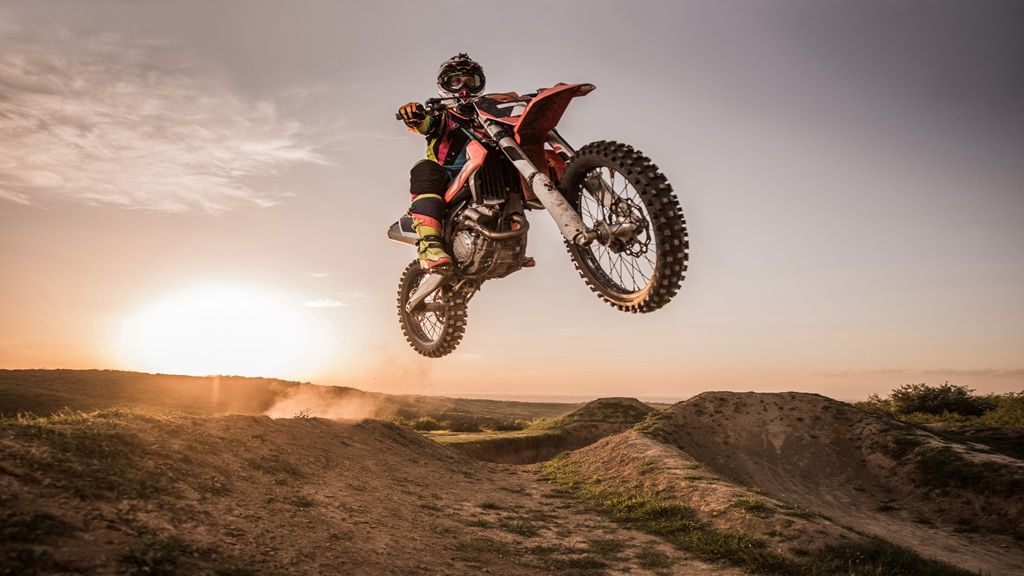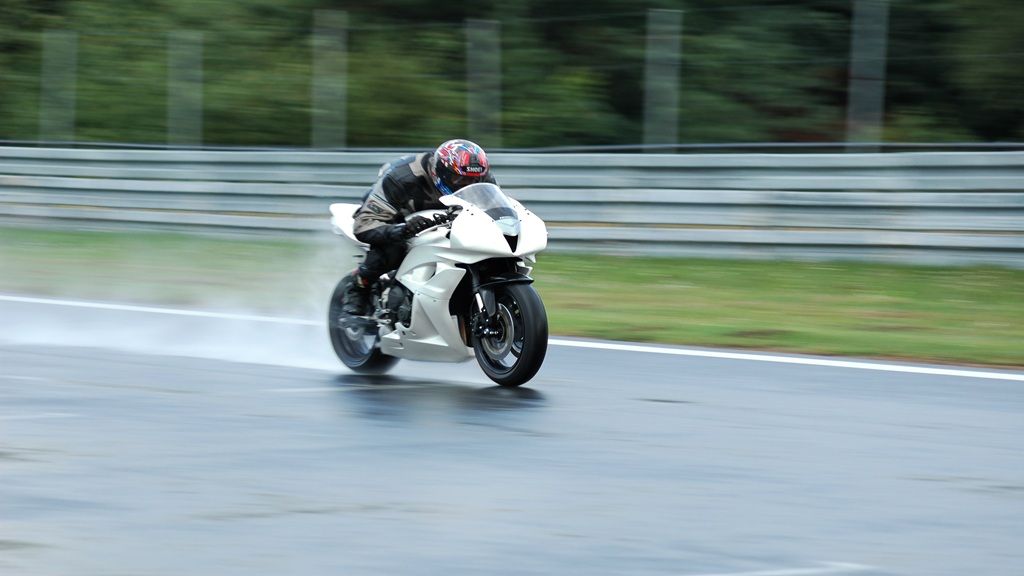
To know how tyre treads affect the riding experience, we first must understand what tyre treads are. A tyre tread is a part of the tyre that makes direct contact with the tarmac. It consists of a pattern or grooves that help in providing traction for the motorcycle.
The tread design of a tubeless tyre is crucial as it helps the rider control the bike in various weather conditions, such as rain or dry pavement. The grooves help channel the water away from the tyre and prevent hydroplaning (a phenomenon where water seeps in between the tyre and the road surface, causing the motorcycle to lose traction).

We shall now take a deeper dive into understanding what the different types of treads are, how tyre treads affect the riding experience and what happens when there are no tyre treads on a motorcycle.
These tyres are designed with a smooth, light groove pattern and have road contact maximised and set as a priority. They have minimal rolling resistance and are designed in a way to ensure the bike keeps moving forward effortlessly. Road tyres are found on street bikes, sport bikes, sport-tourers, and any other motorcycle that has its purpose set as a highway machine.

These types of tyre treads are essentially the same as the road tread ones—except for a deeper, more aggressive groove design and wide sections to cover and encounter maximum road surfaces. They have high-speed cornering properties and high heat-resistance properties. These are mostly found on high-end sports bikes and powerful street motorcycles.
This form of hybrid tyre tread pattern is designed for both road and off-road use. These tyres feature a larger, more aggressive block tyre tread pattern with wide gaps between them for maximising traction off-road while also maintaining a decent level of smoothness for on-road riding.
The all-terrain tyre treads are perfectly suitable for adventure or touring motorcycles and dual-sport bikes that are usually ridden on both the road and off-road. These types of tyre treads handle paved roads and dirt roads equally well and much better than other biased tyre tread types.

The off-road tyre treads, commonly known as knobbies, feature large, deep, widely spaced-out knobs that provide maximum traction in dirt, mud, sand, gravel and even snow. The humongous gaps between the tread blocks help clear debris and improve grip to a huge extent in off-road environments.
Motocross bikes, enduro bikes, trail bikes and off-roaders are usually always found with this type of tyre treads.

These types of tyre treads are not as common as the first two types, but you can find them in use predominantly in MotoGP in wet weather conditions. These tyres have deep water channels and multiple cuts and creases that help displace water in huge amounts and reduce the risk of hydroplaning.
The tread is smoother and free-flowing than the block pattern on off-road tyres, and it is specifically designed to handle wet conditions and support wet-weather riding.
The slicks are the ultimate speed-oriented, track-focused, dry-condition tyre in the entire tyre industry. As the name suggests, slicks are only used for racing purposes around circuits, drag strips, and private racing, as they are not allowed on daily ridden roads.
Slick tyres do not have any sort of tread pattern. They are smooth and look plain from all sides. Since their main use is on the race track and for racing-related purposes, treads and grooves are not essential. The tyre’s material and compound are built in such a sticky way that they provide maximum grip while offering minimal rolling resistance.
Tyre tread wear indicators are present in every single tyre that indicate the wear and tear of the said tyre. The tyre tread depth, structure, and ageing can all be calculated by taking a look at the tyre tread wear indicator. To maintain one's tyre condition, one has to always keep an eye on tyre tread condition.
Similarly, bikes ridden on extremely straight roads for an excessive number of kilometres may cause the centre of the tyre to wear down faster than the corners. This balding is due to the tyre being pressurised in one part alone and the pressure not being distributed evenly to the other areas.
All these tread patterns of tyres have different uses and different purposes as we have discussed in detail. Moreover, tyre wear indicators on the tyre treads are helpful in understanding when to replace your tyres. Check for embossed indicators on the tyre wall, usually a line or arrow positioned below the outer tread. If your tyre tread is at the same level as these indicators, then the tyre should be replaced.
After learning all this, we can understand that tyre treads are not just a random design that designers have plopped onto the rubber compound. They are a well-thought-out, researched, and tested design that enables tyre manufacturers to provide the rider with maximum grip, minimal wear, and loads of confidence while tipping the bike into corners, something we bikers love to do.
At Eurogrip, we have tyres of diverse treads and patterns suited to all road- and bike-related needs. Find the best tyre for your bike only with Eurogrip.